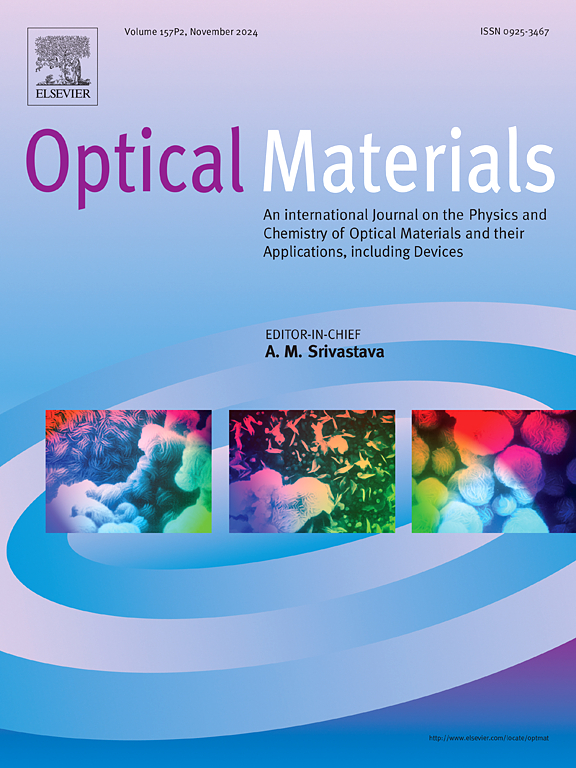Preparation and scintillation properties of Eu3+-doped high crystallinity tellurite glass ceramics
IF 3.8
3区 材料科学
Q2 MATERIALS SCIENCE, MULTIDISCIPLINARY
引用次数: 0
Abstract
In this study, a high-crystallinity glass-ceramic scintillator doped with Eu³⁺ containing Bi₂Te₄O₁₁ nanocrystals was prepared using a traditional melt crystallization method. The optimal heat treatment conditions, phase structure, and luminescent properties of the glass-ceramics were systematically investigated using various characterization techniques, including DSC, XRD, SEM, and spectrophotometry. To achieve glass-ceramic samples with high transmittance and excellent luminescent performance, the optimal heat treatment process was determined to be 500 °C for 10 min. The final sample was found to have a density of 5.9 g/cm³ and a crystallinity of 70 %. Strong orange-red light emission was exhibited by the glass-ceramic under both 465 nm light and X-ray excitation. The maximum integral X-ray excited luminescence (XEL) intensity was found to reach 20.2 % of that of the commercial Bi4Ge3O12 (BGO) scintillation crystal. It is indicated by the research that Eu³⁺-doped high-crystallinity tellurate glass-ceramics are promising candidate materials for scintillators in the field of X-ray detection.
掺杂 Eu3+ 的高结晶度碲玻璃陶瓷的制备和闪烁特性
本研究采用传统的熔融结晶方法制备了一种掺杂 Eu³⁺ 的高结晶度玻璃陶瓷闪烁体,其中含有 Bi₂Te₄O₁₁ 纳米晶体。利用 DSC、XRD、SEM 和分光光度法等多种表征技术系统地研究了玻璃陶瓷的最佳热处理条件、相结构和发光特性。为了使玻璃陶瓷样品具有高透光率和优异的发光性能,确定了最佳热处理工艺为 500 °C 10 分钟。最终样品的密度为 5.9 g/cm³,结晶度为 70%。在 465 纳米波长的光和 X 射线激发下,玻璃陶瓷发出强烈的橙红色光。研究发现,最大积分 X 射线激发发光(XEL)强度为商用 Bi4Ge3O12(BGO)闪烁晶体的 20.2%。研究表明,掺杂 Eu³⁺的高结晶度碲酸玻璃陶瓷是 X 射线探测领域闪烁体的理想候选材料。
本文章由计算机程序翻译,如有差异,请以英文原文为准。
求助全文
约1分钟内获得全文
求助全文
来源期刊

Optical Materials
工程技术-材料科学:综合
CiteScore
6.60
自引率
12.80%
发文量
1265
审稿时长
38 days
期刊介绍:
Optical Materials has an open access mirror journal Optical Materials: X, sharing the same aims and scope, editorial team, submission system and rigorous peer review.
The purpose of Optical Materials is to provide a means of communication and technology transfer between researchers who are interested in materials for potential device applications. The journal publishes original papers and review articles on the design, synthesis, characterisation and applications of optical materials.
OPTICAL MATERIALS focuses on:
• Optical Properties of Material Systems;
• The Materials Aspects of Optical Phenomena;
• The Materials Aspects of Devices and Applications.
Authors can submit separate research elements describing their data to Data in Brief and methods to Methods X.
 求助内容:
求助内容: 应助结果提醒方式:
应助结果提醒方式:


